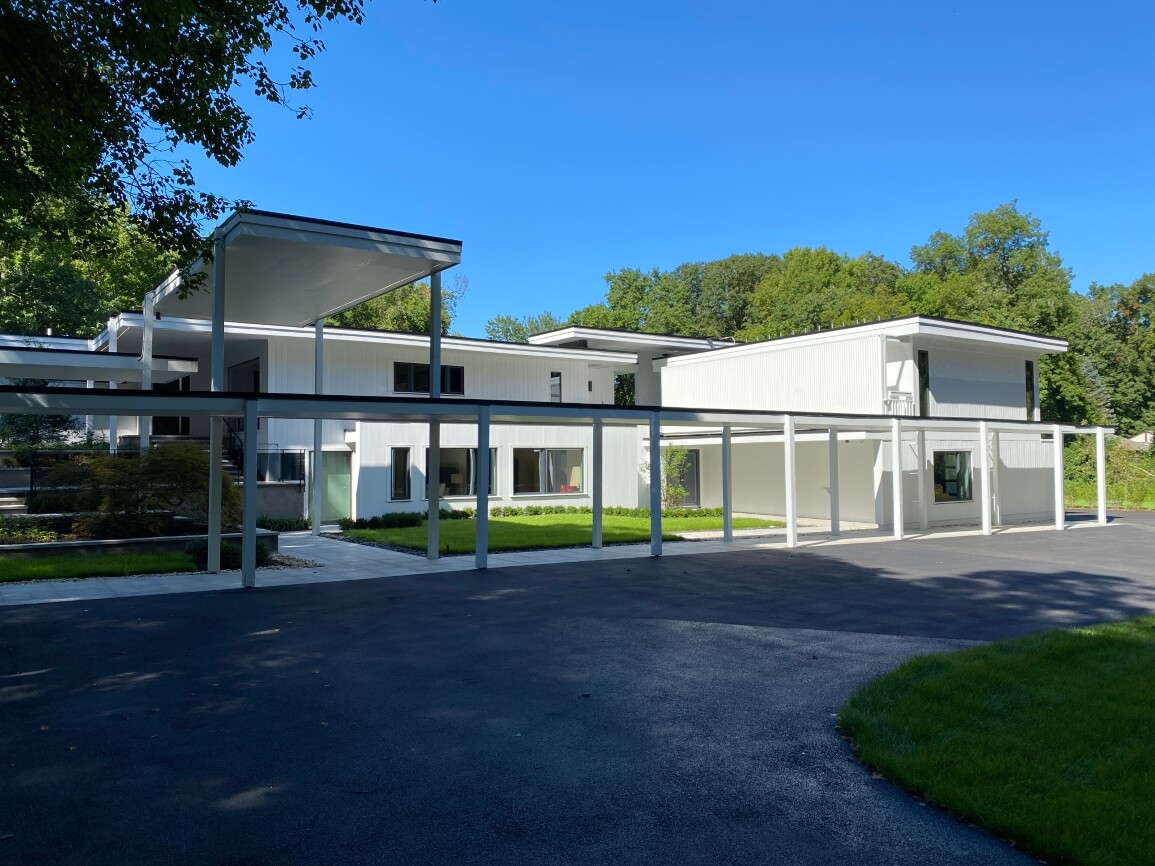Two weeks before Kate Wagner published her scathing treatise of NFTs (non-fungible tokens) as simply an outgrowth of high-money architectural speculation, a Paul Rudolph-designed home in Westchester County, New York, hit the market as an NFT.
The Edersheim Residence, located at 862 Fenimore Road in Larchmont, was originally built in 1958 and then later altered in 1982 by Rudolph at the request of owners Maurits and Claire Edersheim. Rudolph would similarly return for later additions in 1989 and 1991, ultimately adding a pool house (which stands unaltered today), lengthy porch coverings somewhat reminiscent of his earlier work at the Umbrella House, and new lighting fixtures. Though Rudolph did not design the original structure, the depth of his additions and renovations has qualified the home’s inclusion in his oeuvre. The sleepy, Long Island Sound-fronting village of Larchmont sits about 18 miles north of Manhattan.
After a gut (interior) renovation last year that added modern amenities and sustainability upgrades including solar panels on the roof, on-site geothermal generation, more efficient windows, and improved wall insulation, Houlihan Lawrence listed the home for $6.4 million in August. The 9,000-square-foot home, which sits on a 2.49-acre parcel, went unsold and its owner has turned to a new tactic to drum up publicity. On April 8, real estate agency Houlihan Lawrence listed the historic house as the first “Art as Architecture NFT” on the crypto art marketplace OpenSea.
The Edersheim Residence is supposedly the first actual building to be sold as an NFT. While the Mars House, a speculative rendering of a glass house on Mars from artist Kristina Kim (or was it made by her?) sold for $500,000 in March, this is the first time that an NFT has gone up for sale that represented a real property.
The nonprofit Paul Rudolph Heritage Foundation, which has been promoting 862 Fenimore via its social media channels in the last year in hopes of finding a permanent buyer, had previously listed the property at $4.9 million.
According to Paul Rudolph Heritage Foundation president Kelvin Dickinson, the Heritage Foundation only found out about the NFT sale recently, not before it went up on OpenSea. Still, he told AN, the demolitions of two of Paul Rudolph’s mid-century modern projects in the last year (212 Seabreeze Avenue in Delray Beach, Florida, and the Burroughs Wellcome headquarters in Durham, North Carolina) has made the group keenly aware that any and all public awareness of Rudolph-designed projects was crucial. It’s the reason the Heritage Foundation advertises listings for Rudolph-designed homes, as they hope to get them into the hands of long-term owners.
However, Dickinson added, whoever buys the Edersheim Residence as an NFT will only get the home, not the intellectual property or photo rights. That would make the sale just another real estate transaction, albeit one hosted online for ease of convenience.
And would anyone buy a historic house, even with a contemporary retrofit, sight unseen online? At the time of writing the house hasn’t had any bids yet and is still sitting at its minimum price of 1 Ether ($2,409). Dickinson said that if the auction is successful, there are still a lot of endangered properties that need love, but added he was worried that online buyers might attempt to “warehouse” their new purchases—buying and shelving art isn’t an uncommon practice, but historic buildings need constant upkeep and attention and owning the digital rights to a home could mean a buyer who never actually sees it.
There’s also the whole “purchasing an NFT fuels the ecologically destructive processes needed to add it to a blockchain” aspect, so keep that in mind if you’re Ether-rich and looking to buy a house in Westchester. Maybe cash would be better.
